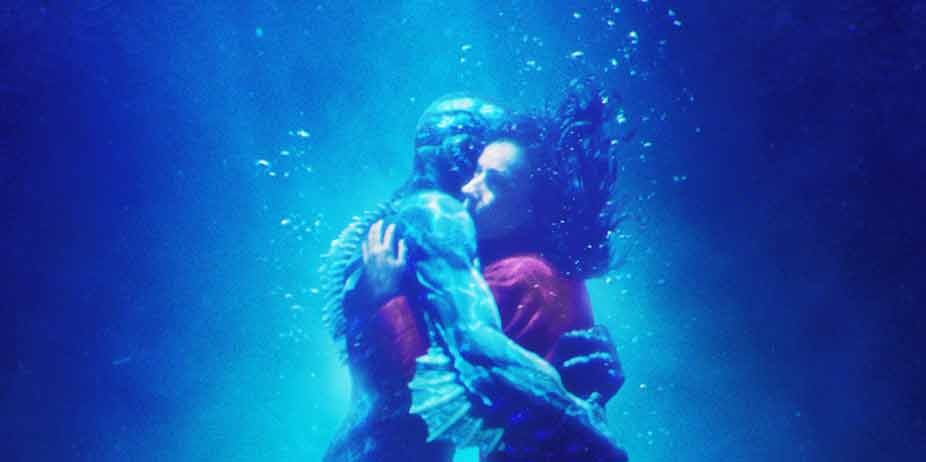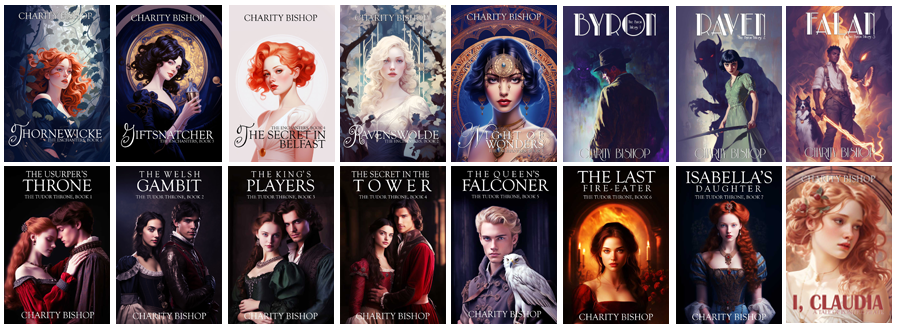 The
Shape of Water (2017)
The
Shape of Water (2017)
Few directors have the remarkable ability to take an old story and transform it into a unique vision as Del Toro. He used old tropes to build a complex horror / ghost story in Crimson Peak, and now combines The Creature From the Black Lagoon with Beauty & the Beast for The Shape of Water. It's an atmospheric and unconventional love story.
Elise (Sally Hawkins) lives an ordinary life, above a theater. She keeps to her routine, spends time with her neighbor Giles (Richard Jenkins) at night watching old movies, and each day goes to sweep floors and mop up spills in a top secret research facility. One day, while swabbing one of the rooms, men roll in a water tank. Drawn to it, she touches it and, to her surprise, an inhuman hand moves within the tank. The researchers hurriedly bustle her and the others from the room, but it doesn't take her long to find out the truth: they have captured a Creature.
Reclusive and violent, he does not respond well to the brutal torture tactics of Richard Strickland (Michael Shannon), commissioned with 'getting intel out of him.' But as Elise starts feeding him from her lunch bag, the two bond. Her friend Zelda (Octavia Spencer) finds it a peculiar friendship, but when the researchers decide to murder the Creature and dissect him, she knows she has to save him...
I have mixed feelings about this film, for a variety of reasons. On one level, it's an exquisite film dripping with nostalgic originality which paints a perfect heroine in Elise, a mute who bonds with another 'social outcast' in the form of the Creature. She tames his wildness and he unlocks her hidden potential and courage. The careful viewer will see small clues throughout that explain the ending, which is (SPOILER) that Elise herself is likely a water creature. This world seems tangible, believable, and fantastical, with romantic overtones. The trope of a woman falling for a 'monster' is ancient, and a symbol of the feminine defeating the masculine, with the masculine completing the feminine and leading to her sexual awakening. And therein lies one of my problems; I didn't feel the rampant sexual content was necessary to the story. I realize fantasy is a medium through which the human psyche explores its deeper, hidden desires, but since she looks human and may be human, her relationship with the Creature is bestiality. (I also don't appreciate how cats are always the favored snack food of "monsters"!)
Beyond that, the film contains some thought-provoking ideas and themes, such as the definition of what makes something worth saving; Elise does not define the Creature as a monster, she defines it as something with a soul, who should not be tortured, held against its will, imprisoned, or unloved. Her tolerant attitude is shown in direct contrast with Strickland's, who spouts Biblical analogies while participating in cruel behaviors and acting inappropriately toward Elise. The idea seems to be either a total embrace of the abandonment of traditional beliefs (Elise and the Creature) or conformity to an ideology built on divisive attitudes and false piety (fake religion), when the middle ground is always a safer place to stand. It's a romantic, charming story underpinned with social, political, and moral subtext. It does deserve its Oscar nominations, for it is beautifully designed and exquisitely acted, but like all of the director's work, it has a message about conventional morality that not all will agree with.
Sexual Content:
A woman climbs naked into the tub (backside, full
frontal nudity) and pleasures herself there (out of
focus in the background); we see her doing this again
the next morning; a woman takes out her breast and puts
it into her husband's hand; we then see them having
semi-rough clothed sex (a long scene); a woman drops her
robe (backside nudity) and climbs into a tub with the
Creature (full side/frontal nudity, before she pulls the
curtain); a woman asks how the Creature had sex, and
another woman references a secret penis with her hands;
another scene of full frontal / side nudity, as a woman
and the Creature swim together. A homosexual man talks
about his attraction to another man, and touches his
hand, before being thrown out of a restaurant.
Language:
A dozen f-words; several abuses of Jesus' name (and GD),
various profanities.
Violence:
A man has his fingers bitten off; after they are sewn
on, they rot, and he pulls parts of them off before he
rips them free (with blood); a man is shot repeatedly in
the face and body; a man tortures the first man, by
putting his finger in his cheek wound and dragging him
across the floor; the Creature is tortured with an
electrical probe; several people are shot in the chest;
the Creature slices a man's throat open and he dies; he
also eats a cat (shown with the headless body in his
mouth).
Other:
The villain often references scripture as justification
for being a racist, a bigot, and a torturer of the
Creature (only man is made in God's image, in his mind).
